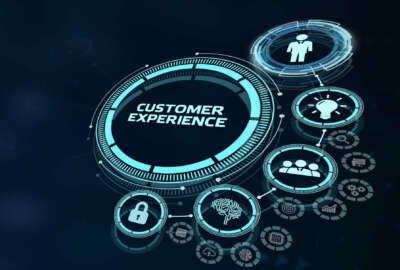Insight by Adobe
CX Exchange 2024: Adobe’s Nancy Newell on data-driven customer service improvement
Adobe’s public sector experience leader says agencies need to take a “full omnichannel” approach to customer experience to meet their users’ expectations.
The federal government is taking a digital-first approach to service delivery, reimagining what it means to keep its customers — the American public — engaged and satisfied.
Agencies are holding themselves to a higher standard for delivering online experiences to the public. But in some cases, customers prefer to interact with agencies over the phone or through in-person appointments.
Given that need to meet their users’ diverse expectations, agencies need to take a “full omnichannel” approach to customer experience, Nancy Newell, head of strategic alliances and marketing experiences for public sector at Adobe, said during Federal News Network’s 2024 CX Exchange.
“That’s part of that citizen experience. ‘Am I getting what I want at the right time, with the right information? Is that going to bring value to me?’ That’s also going to, in the end, lead them to say, ‘Wow, this government agency is very, very important to my experience as a citizen, and I need them,’ ” Newell said.
Data-driven customer experiences
To understand how customers are interacting with the government, and where an agency needs to make improvements, Newell said each federal organization’s customer experience journey begins with data.
“The key there is looking at all the data sets you have, and then trying to figure out what you don’t have,” she said. “Data is critical because it helps you to find what that profile is. What is it that they really want? [You] understand the demographics of who you’re trying to speak to and talk to. What is their background financially? Where are they located? Are they a mom? Just all the different factors of who that person is.”
Tapping into CX data helps agencies better understand the user journeys of their customers. By gathering customer feedback, agencies can pinpoint where their public-facing services fall short of expectations.
“What are they going to respond to? What are they going to react to? That’s going to be critical. Marketing behavioral data is something that years ago, we didn’t really have. But now, it is part of that digital journey,” Newell said. “If you don’t have it, you’re going to have to figure out where you can get some of that generalized data, so that you’re factoring that into the journey you’re building.”
That data can also improve outreach to underserved communities that aren’t fully tapping into agency benefits and services.
“How do we get people to be aware of these government services and say, ‘Well, there’s a lot of good things here I’m getting from this agency. I want to go back to them and say that you did great,’ ” Newell said. “You’ve got to have not only that feedback loop but also the analytics to understand, do they come back? Do they come back and get those services?”
Empowering employees to improve CX
CX leaders in the federal government are also looking to empower their employees and give them the support and tools they need to provide a high level of service to the public.
“You’re putting the technology behind this, so that you’ve got that agile environment. Your employees are able to really get that real-time feedback, make adjustments where needed, respond and provide that response back to that if they’re upset,” Newell said. “Or, if it’s a good feedback piece, they’re getting the word out and they’re able to talk about it. Data is going to be critical to anything we’re doing. It’s top of mind in so many different places, like it or not. It’s something government has to take into account when they’re when they’re building out what their experience is going to be.”
Adobe has helped the State Department modernize its website, giving citizens a one-stop shop to apply for, or renew, a passport or visa. It’s also supported the Centers for Disease Control and Prevention’s efforts to drive traffic to its newsletters and website content.
“A lot of this is pretty practical. It’s not big buzzwords. It’s just understanding the state of state of the agency and where they’re sitting, and then understanding where we need to be,” Newell said. “What is this journey we need to go on? What is that end result that we want here? And I think, sometimes, if you if you look at where you are and look at where you want to go, it makes it a lot easier to block and tackle the in between.”
The Biden administration, in a 2021 executive order, called for seamless customer services across the government. But Newell stressed that agencies need to keep making iterative CX improvements and incorporate customer feedback to meet public expectations.
“Once you do fix these things, and you listen, and you create this journey, continuously getting that real-time data, you can’t just say, ‘OK, it’s in place, let’s go.’ Because there’s going to always be room to change and make improvements,” she said.
To drive continual success, Newell said agencies need to assemble cross-functional teams to ensure they’re taking a united approach to changes.
“Big picture, it’s a journey we’re all going to have to go on together. There are going to be a lot of things that are going to help with efficiencies within these agencies,” she said. “My hope is that bringing the right teams around the table and really looking at what is the solution … saying, ‘OK, here’s what will help modernize this,’ so that in the next 10 years, we’re really able to take our country where they need to be in CX.”
Discover more customer experience tactics and takeaways from Federal News Network’s CX Exchange 2024 now.
Copyright © 2025 Federal News Network. All rights reserved. This website is not intended for users located within the European Economic Area.
Jory Heckman is a reporter at Federal News Network covering U.S. Postal Service, IRS, big data and technology issues.
Follow @jheckmanWFED






